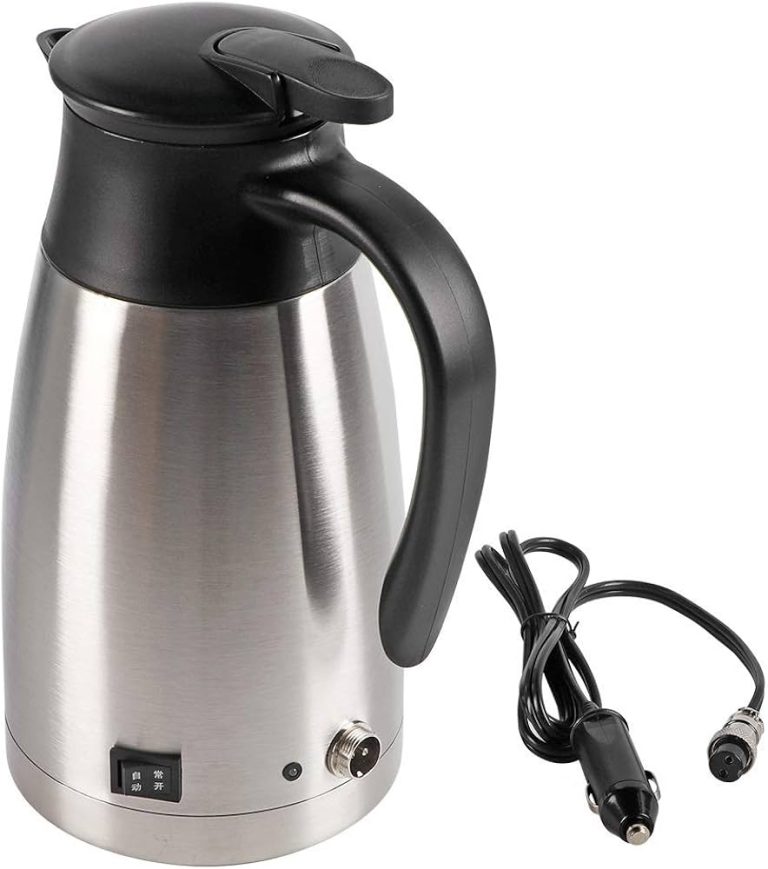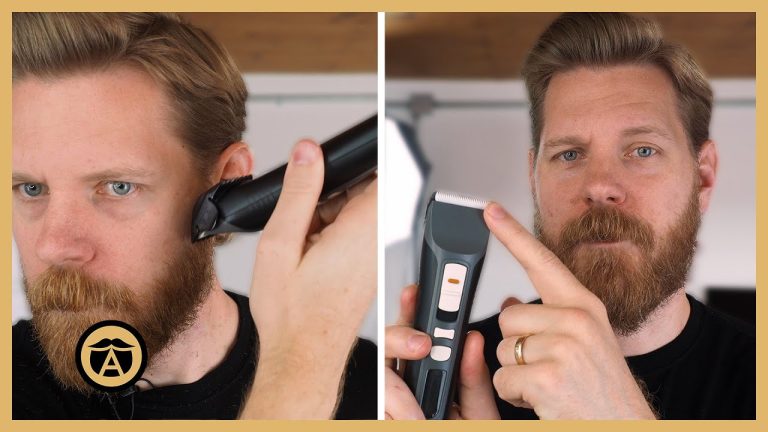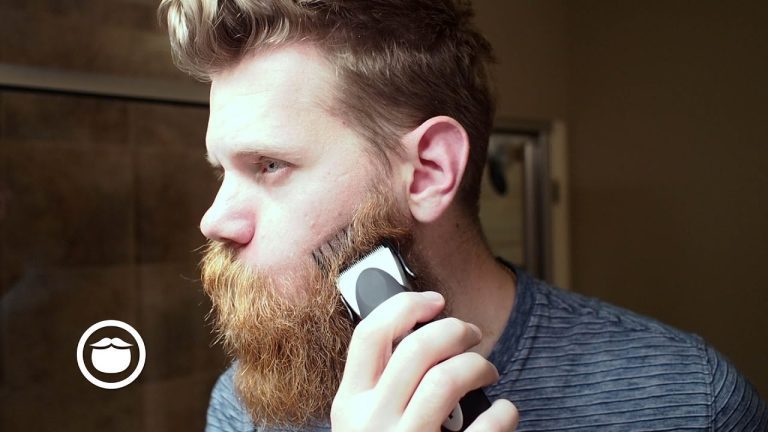How to Properly Use a Beard Trimmer?
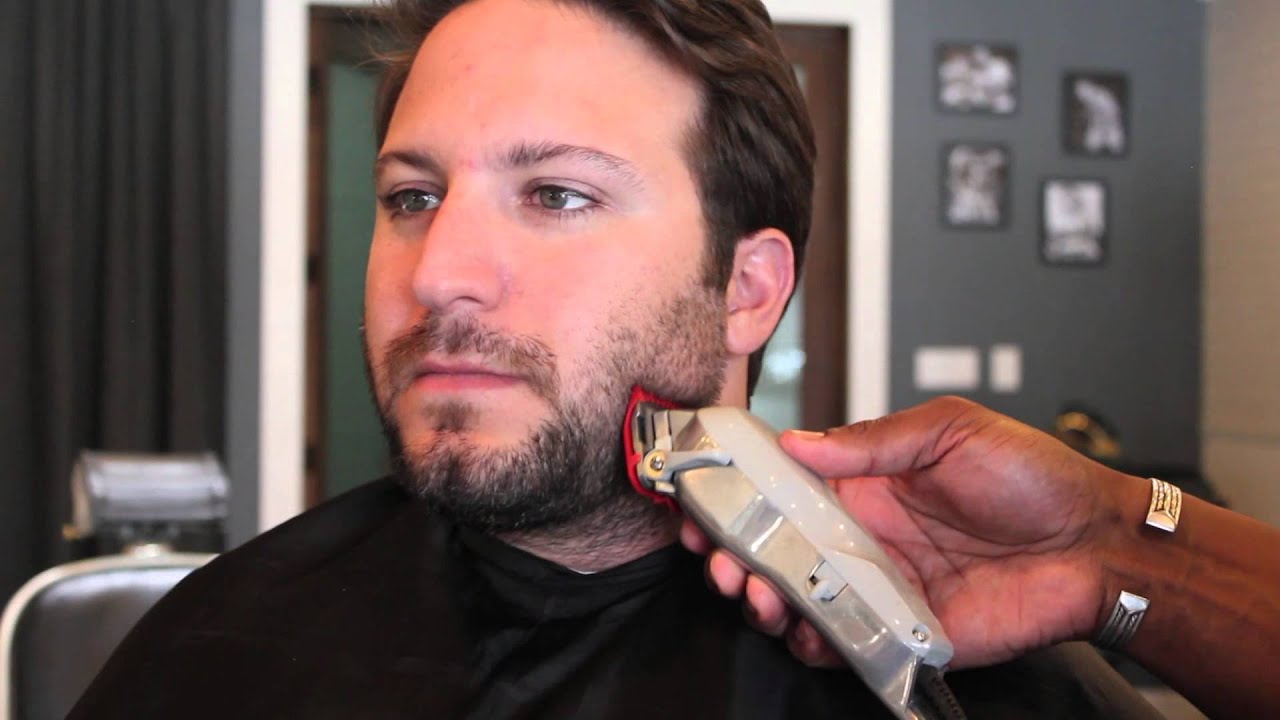
To properly use a beard trimmer, first, clean and dry your beard, then adjust the trimmer to your desired length and trim in the direction of hair growth. Maintaining a well-groomed and stylish beard requires the right tools and techniques.
A beard trimmer is an essential tool for any man who wants to keep his facial hair in check. However, using a beard trimmer correctly is crucial to achieve the desired results. Whether you are a beginner or a seasoned pro, this guide will provide you with the necessary steps and tips to confidently and effectively use a beard trimmer.
From preparing your beard for trimming to adjusting the trimmer length and ensuring a precise trim, we will cover everything you need to know to master the art of beard grooming. So, let’s dive in and learn how to properly use a beard trimmer.
Choosing The Right Beard Trimmer
When it comes to maintaining your beard, a high-quality beard trimmer is your best friend. A good beard trimmer can help you achieve a neat and well-groomed look effortlessly. But with so many options available in the market, choosing the right beard trimmer can be overwhelming. Here are some key factors to consider when selecting a beard trimmer that suits your needs.
Factors to Consider when Selecting a Beard Trimmer
When selecting a beard trimmer, there are several factors you should keep in mind to ensure you make the right choice. These factors include:
- Blade Quality: The quality of the blades is a crucial factor to consider. Look for trimmers with stainless steel or titanium-coated blades for durability and sharpness. These blades will deliver precise and clean cuts, without tugging or pulling on your beard.
- Adjustable Settings: Different beard lengths require different trim settings. Make sure the beard trimmer you choose has adjustable settings to allow you to customize the length of your beard. Look for a trimmer that offers a range of length options to suit your personal style.
- Battery Life: If you travel frequently or prefer to use your trimmer cordless, battery life is essential. Opt for a trimmer with a long battery life that can power through multiple grooming sessions without needing to be recharged.
- Ease of Cleaning: Regular maintenance and cleaning of your beard trimmer are essential to keep it in optimal condition. Look for models that are easy to clean, with detachable blades and washable parts. This will ensure that your trimmer remains hygienic and free from build-up.
- Brand Reputation: Trustworthy and reputable brands often provide high-quality products and reliable customer support. Do your research and choose a trimmer from a well-established brand with positive reviews and a good reputation.
Importance of Quality and Versatility
Quality and versatility are of utmost importance when it comes to selecting a beard trimmer. Investing in a high-quality trimmer ensures that you have a durable and long-lasting grooming tool. A good trimmer will not only trim your beard hair but also offer various attachments and features to enhance your grooming routine.
With a versatile trimmer, you can experiment with different beard styles and lengths, giving you the freedom to switch up your look whenever you want. Additionally, a quality trimmer will have sharp blades that can easily handle different hair types and textures, ensuring a smooth and comfortable trimming experience.
Understanding The Components Of A Beard Trimmer
A beard trimmer is an essential tool for maintaining a neat and stylish facial hair look. To make the most out of your trimmer, it is important to have a good understanding of its components. This knowledge will not only help you achieve the desired results but also ensure the longevity of your trimmer. In this section, we will delve into the key components of a beard trimmer and explore the different features they offer.
Blade Types and Their Features
The blades of a beard trimmer are arguably the most important component, as they determine the precision and efficiency of your trimming experience. There are a few different blade types commonly used in beard trimmers, each with its unique features:
1. Stainless Steel Blades
Stainless steel blades are a popular choice due to their durability and resistance to rust. These blades provide a sharp and precise cut, ensuring a clean and even trim. They are also easy to clean and maintain, making them a reliable option for long-term use.
2. Titanium-Coated Blades
Titanium-coated blades are known for their exceptional sharpness and strength. The titanium coating enhances the durability of the blades, allowing them to cut through even the thickest and coarsest of hair with ease. If you have a dense or unruly beard, a trimmer with titanium-coated blades is an excellent choice for achieving a precise and effortless trim.
Different Beard Trimmer Attachments and Their Functions
Beard trimmers often come with a range of attachments that allow you to customize your trimming experience according to your preferences and styling needs. Understanding the functions of these attachments will help you achieve the desired beard length and style:
1. Adjustable Guards
Adjustable guards are an essential attachment for achieving consistent beard length. These guards typically feature different length settings, allowing you to easily trim your beard to a specific length. Whether you prefer a short stubble or a longer beard, using an adjustable guard will help you achieve a uniform look.
2. Detailing Blades
Detailing blades are shorter and narrower than the standard blades and are specifically designed for precision trimming. These blades allow you to shape and define your beard with accuracy, making it easier to achieve neat lines and intricate detailing. Whether you are contouring your jawline or shaping your mustache, detailing blades are the perfect tool for achieving a polished and well-groomed look.
3. Precision Trimmer Attachments
Precision trimmer attachments are smaller, more narrow attachments that are ideal for trimming hard-to-reach areas. These attachments are perfect for shaping your sideburns, cleaning up your neckline, or tidying up any stray hairs. With a precision trimmer attachment, you can achieve a flawless finish, even in the most intricate areas of your beard.
Understanding the components of a beard trimmer, including the blade types and different attachments, is key to maximizing its potential. By selecting the right blades and utilizing the appropriate attachments, you can achieve a precise and perfectly styled beard. Remember to handle the trimmer with care, clean it regularly, and store it properly to ensure its longevity.
Preparing Your Beard For Trimming
Properly preparing your beard before using a beard trimmer is essential to achieve the best results. By following a few simple steps, you can ensure that your beard is clean, untangled, and ready for a precise trim. In this section, we will discuss three important elements of preparing your beard for trimming: washing and drying, brushing and detangling, and applying pre-trim products.
Washing and Drying Your Beard
To start, it is important to wash your beard thoroughly to remove any dirt, oil, or product buildup that may hinder the trimmer’s performance. Use a beard-specific shampoo that suits your beard type and scrub gently to get rid of any impurities. Rinse off the shampoo completely, making sure no residues are left behind.
After washing, pat dry your beard with a clean towel. Avoid rough rubbing, as this can cause frizz and damage. Instead, gently squeeze the excess water from your beard, leaving it slightly damp for ease of trimming.
Brushing and Detangling Your Beard
Before reaching for your trusty beard trimmer, it is crucial to brush and detangle your beard. Using a beard brush or comb, start at the roots and comb through your beard in a downward motion. This will help eliminate any knots or tangles, making it easier to achieve an even trim.
As you brush and comb, pay attention to areas that may need extra care, such as under the chin or around the neckline. Ensuring your beard is free of tangles will allow the trimmer’s blades to glide smoothly through your facial hair, providing a more efficient and precise trim.
Applying Pre-trim Products for Optimal Results
Applying pre-trim products can greatly enhance the results of your beard trimming session. Consider using a beard oil or balm to moisturize and soften your beard. These products not only make your beard more manageable but also help the trimmer glide effortlessly without snagging or pulling on the hair.
To apply these products, start by dispensing a small amount onto your palms, then rub them together to evenly distribute the product. Gently massage the oil or balm onto your beard and the underlying skin, focusing on areas that tend to be dry or prone to irritation.
By implementing these three steps – washing and drying your beard, brushing and detangling, and applying pre-trim products – you can ensure that your beard is in optimal condition for trimming. Now that your beard is primed, let’s move on to the next section and explore the techniques and tips for using your beard trimmer effectively.
Mastering The Proper Technique For Beard Trimming
Before you start using your beard trimmer, it’s essential to determine the desired length for your beard. Whether you want a short, well-groomed beard or a longer, more rugged style, knowing the desired length will guide you throughout the trimming process. Remember, different trimmers come with different length settings, so familiarize yourself with the options your trimmer offers. Once you’ve decided on the desired length, it’s time to move on to the next step.
One of the most important techniques for a well-groomed beard is trimming with the grain. This means following the natural direction in which your hair grows. By doing so, you’ll achieve a neat and even appearance. Trimming against the grain can cause irritation and uneven results, so it’s best to avoid it. Whether you’re working on your cheeks, jawline, or neckline, carefully move the trimmer in the same direction as your hair growth for a clean and polished look.
When it comes to beard trimming, using the correct trimming angle is crucial for precise and accurate results. Hold the trimmer at a 45-degree angle to your face as you trim your beard. This angle ensures that you’re trimming the right amount and achieving a well-defined shape. Avoid holding the trimmer flat against your face, as this can lead to uneven cutting and unsatisfactory results. Be mindful of the angle throughout the trimming process to maintain control and achieve the desired outcome.
Maintaining Consistency And Symmetry In Your Beard
When it comes to trimming your beard, one of the most important factors to consider is maintaining consistency and symmetry. These two elements go hand in hand to give your beard a polished and well-groomed appearance. In this section, we will discuss some essential tips and techniques to help you achieve symmetry around the neckline and cheekline, as well as how to use guide combs for a uniform beard length. We will also explore the art of trimming difficult areas and edges with precision. Let’s dive in!
Achieving Symmetry Around the Neckline and Cheekline
Having a well-defined neckline and cheekline is crucial for a balanced and symmetrical beard. To achieve this, follow these steps:
- Define your neckline: Start by placing two fingers above your Adam’s apple and imagine an imaginary “U” shape extending horizontally. Trim everything below this imaginary line to create a clean neckline. Be sure to avoid cutting too high towards your chin, as it may result in an unnatural look.
- Shape your cheekline: Use a beard trimmer with a guide comb or adjustable guard to maintain a consistent length. Start by combing your beard downward and use upward motions to trim any stray hairs above your cheekbone. Take your time and make gradual adjustments to achieve a symmetrical appearance on both sides.
Using Guide Combs for Uniform Beard Length
Guide combs are a handy tool when it comes to maintaining a uniform beard length. They attach to your beard trimmer and help you achieve consistent results. Here’s how to use guide combs effectively:
- Select the appropriate guide comb: Different guide combs have varying lengths, so choose one that matches your desired beard length. Experiment with different lengths to find the one that suits you best.
- Comb your beard: Before you start trimming, comb your beard in the direction of hair growth. This will help remove any tangles or knots, making it easier for the trimmer to glide through smoothly.
- Trim with the grain: Start trimming in the direction of hair growth to maintain a natural-looking beard. Use slow and steady movements, and be mindful of not pressing the trimmer too hard against your skin.
- Check for consistency: After each pass, take a moment to assess the length of your beard. If you notice any uneven spots, make gentle adjustments using the guide comb. Remember, it’s always better to trim less initially and make gradual changes as needed.
Trimming Difficult Areas and Edges with Precision
Trimming certain areas of your beard, such as the mustache, sideburns, and edges, requires extra attention to detail. Follow these tips to achieve precision in those tricky spots:
- Use a smaller trimmer attachment: Switch to a smaller trimmer attachment or remove the guide comb altogether for greater precision. This will allow you to trim closer to the skin without the risk of removing too much hair.
- Take your time: Precision trimming requires patience, so don’t rush the process. Use small, controlled movements to gradually shape and define the edges. If you’re unsure, it’s always better to trim conservatively and make adjustments as needed.
- Trim against the grain: In certain areas, like the upper lip, trimming against the grain can help achieve a more defined look. However, be careful not to overdo it, as it may lead to skin irritation.
- Clean up stray hairs: Once you’ve finished trimming, take a moment to inspect your beard for any stray or uneven hairs. Use scissors or a precision trimmer to carefully remove any outlying hairs and create a clean and polished appearance.
By following these techniques and incorporating them into your beard grooming routine, you’ll be able to maintain consistency and symmetry in your beard effortlessly. Remember, practice makes perfect, so don’t be discouraged if it takes some time to achieve your desired look. Happy trimming!
Proper Care And Maintenance Of Your Beard Trimmer
Keeping your beard trimmer in top condition is essential for achieving a precise and enjoyable trimming experience. With regular care and maintenance, you can ensure that your trimmer remains sharp, efficient, and long-lasting. Here are some key steps you should follow to properly care for and maintain your beard trimmer:
Cleaning and Removing Hair Clippings from Your Trimmer
- After each use, it’s important to clean your beard trimmer to prevent hair and dirt buildup. Cleaning your trimmer not only helps maintain hygiene but also ensures optimal performance.
- Start by removing the trimming head or attachment from the trimmer, following the manufacturer’s instructions.
- Gently tap the trimmer over a trash can or sink to remove loose hair clippings. You can also use a cleaning brush to remove any stubborn hair particles.
- To thoroughly clean the trimming head, you can rinse it under running water while carefully avoiding the device’s internal parts. Make sure your trimmer is waterproof or follow the manufacturer’s guidelines for cleaning.
- Allow the trimming head to fully dry before reattaching it to your beard trimmer.
Regularly Oiling and Lubricating the Blades to Keep Them Sharp
Maintaining sharp blades is crucial for achieving clean and precise trimming results. Regularly oiling and lubricating the blades helps reduce friction and wear, keeping them in optimal condition. Here’s how you can do it:
- Consult your trimmer’s manual to identify the recommended lubricating oil. A few drops of oil are usually sufficient for lubricating the blades.
- Turn on your trimmer and apply the oil directly onto the blades. Be cautious to avoid applying excessive oil since it can lead to clogging.
- Allow the oil to spread evenly across the blades by running the trimmer for a few seconds without any attachments.
- Use a clean cloth or tissue to wipe off any excess oil from the blades.
Replacing Worn-out Parts and Keeping Your Trimmer in Top Condition
To ensure that your beard trimmer maintains its performance and functionality, it’s important to replace worn-out parts when necessary. Additionally, following these practices will help keep your trimmer in top condition:
- Check your trimmer’s manual or contact the manufacturer to identify the lifespan of different parts, such as blades, combs, and batteries.
- Regularly inspect the trimmer for any signs of damage or wear, such as dull blades, loose parts, or diminished battery performance.
- Order genuine replacement parts from authorized sellers or directly from the manufacturer to guarantee optimal compatibility and performance.
- Store your trimmer in a clean and dry place, away from moisture and extreme temperatures.
By following these care and maintenance practices, you can extend the lifespan of your beard trimmer, ensure its reliability, and enjoy precise and effortless trimming experiences every time.
Additional Tips For A Perfectly Groomed Beard
Using a Beard Comb or Brush to Style Your Beard
A beard comb or brush is an essential tool for maintaining a well-groomed beard. It helps to detangle your facial hair, distribute natural oils, and style your beard in the desired shape. To use a beard comb or brush effectively:
- Choose the right comb or brush depending on the length and thickness of your beard.
- Start combing or brushing from the root towards the end, working your way through the entire beard.
- Use short, gentle strokes to avoid tugging or pulling on the hair.
- Comb or brush your beard daily to keep it neat and tidy.
Applying Beard Oil or Balm for Condition and Shine
Beard oil or balm is a must-have product for every beard enthusiast. It provides essential hydration, softens the hair, and adds a healthy shine to your beard. Here’s how to apply beard oil or balm effectively:
- Wash your beard with a gentle beard shampoo and towel dry it.
- Dispense a few drops of beard oil or a small amount of beard balm onto your palm.
- Rub your hands together to warm the oil or balm.
- Gently massage the oil or balm into your beard, starting from your skin and working your way through the hair.
- Distribute the product evenly using a beard comb or brush.
Trimming and Shaping Your Mustache to Complement Your Beard
Your mustache plays a crucial role in achieving a perfectly groomed beard look. It needs regular trimming and shaping to complement the style of your beard. Follow these steps to trim and shape your mustache effectively:
| 1. | Comb your mustache downward using a fine-toothed comb. |
| 2. | Trim any stray or overgrown hairs using small, sharp mustache scissors. |
| 3. | Define the shape of your mustache by trimming the edges with precision. |
| 4. | Gently blend the mustache into your beard for a seamless look. |
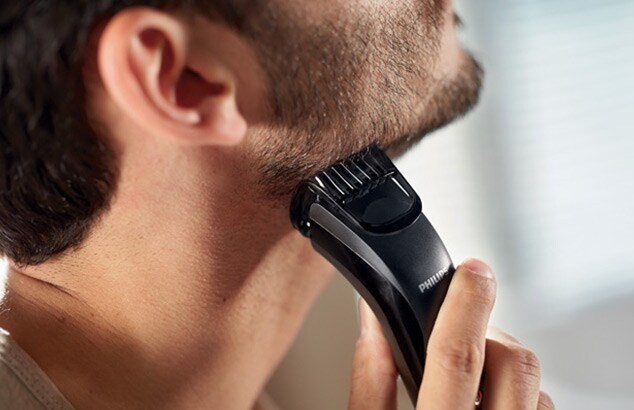
Credit: www.usa.philips.com
Frequently Asked Questions Of How To Properly Use A Beard Trimmer
Do You Trim Up Or Down With A Beard Trimmer?
You trim up with a beard trimmer to maintain a neat and even appearance.
How Do You Trim A Beard With A Trimmer For Beginners?
Trimming a beard with a trimmer for beginners? Here’s how:
1. Choose a trimmer with adjustable settings for length control.
2. Start by combing your beard in the direction it naturally grows.
3. Trim from the edges, working towards the center, using gentle, upward strokes.
4. Gradually adjust the trimmer length to achieve your desired style.
5. Clean up any stray hairs and use scissors for precision shaping if needed.
What Are The Different Attachments That Come With A Beard Trimmer?
The different attachments that come with a beard trimmer include various length guards, a precision trimmer, and a cleaning brush.
How Often Should I Clean My Beard Trimmer?
It is recommended to clean your beard trimmer after every use to ensure maximum performance and prevent bacterial buildup.
Conclusion
Using a beard trimmer properly is essential for achieving the perfect look. By following the tips and techniques outlined in this blog post, you can ensure a precise and even trim every time. Remember to choose the right trimmer for your needs, maintain it regularly, and take your time when trimming.
